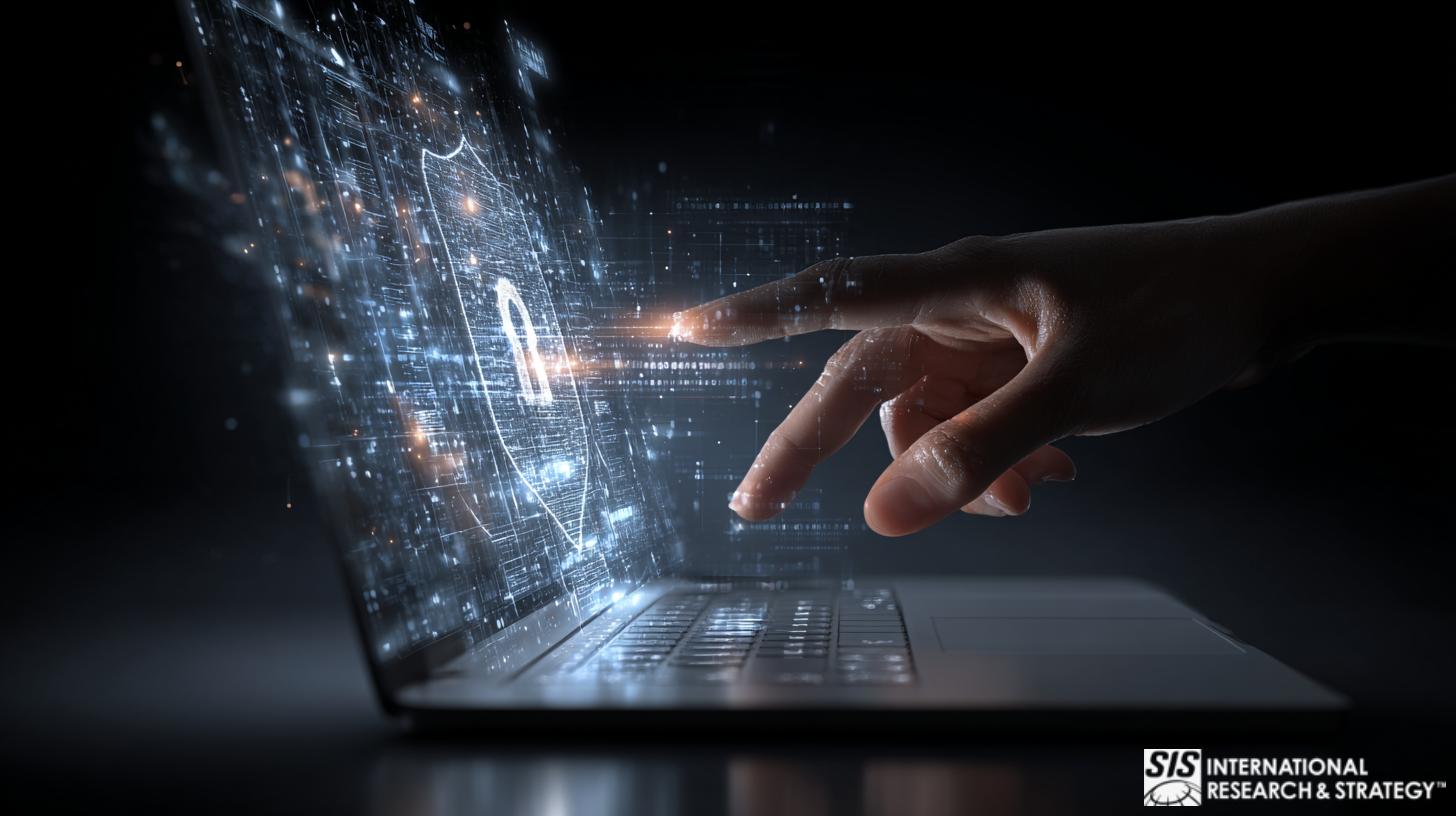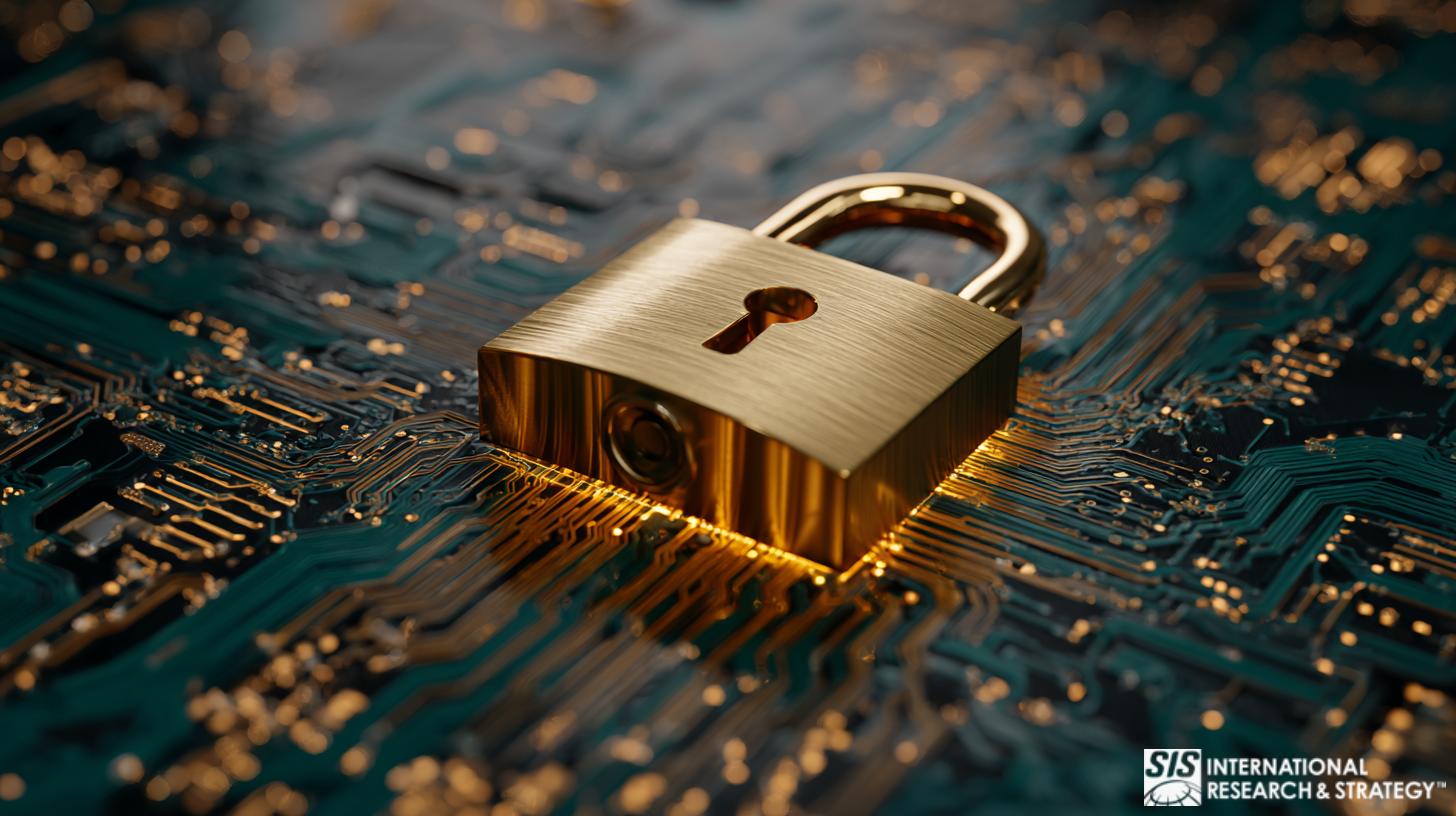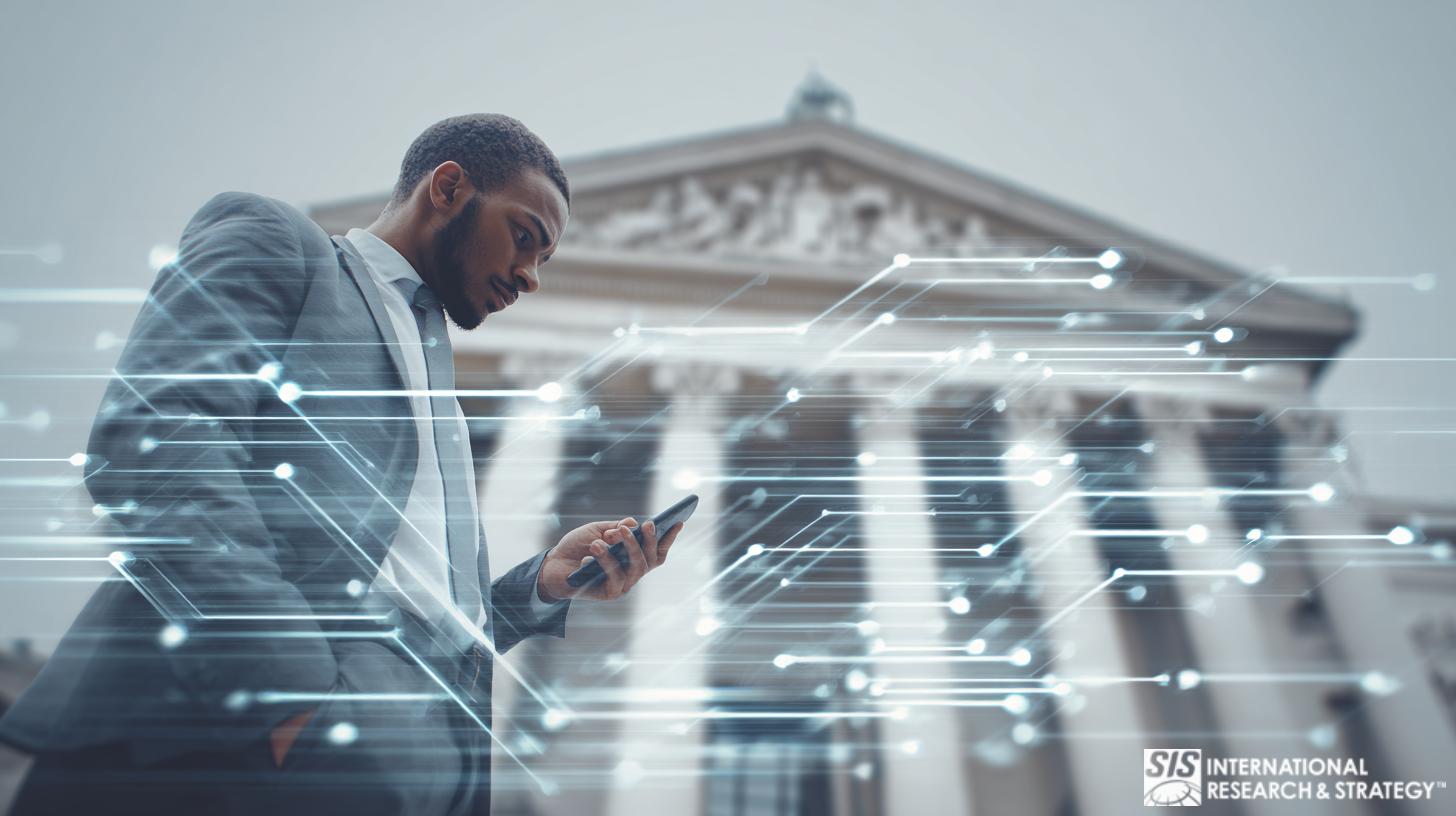
فيروس مختلف تمامًا
لمحة موجزة عن المعركة المستمرة لوقف موجة الغزو السيبراني في قطاع الرعاية الصحية.
In addition to subversive hacking in the business world, where private information can be compromised and sensitive company data absconded with, cybersecurity measures are now employed to negate the effects of hacking by foreign entities, used a political weapon. It is an increasingly serious global problem, and one that has necessitated the implementation of advanced cybersecurity methodologies to counteract the increasingly sophisticated capabilities of hackers to subvert these very systems.
“In recent years, cybersecurity has been a growing concern in healthcare, with high-profile cyber-attacks and vulnerabilities causing disruptions for insurers, hospitals, and medical device makers. The stakes for patients are high too as patient data could be lost or tampered with, hospital services interrupted, or patients harmed through attacks targeting specific devices … “ 1
التدخل الحكومي لمكافحة الجرائم الإلكترونية
The rapid digitization of the healthcare industry makes this sector particularly vulnerable to cyber attack, and this fact has not been lost on the US Congress. The House Energy and Commerce Committee recently convened to address cybersecurity in the health sector. Information Sharing and Analysis Centers (ISACS) may be key in providing enhanced security for healthcare providers and in thwarting efforts of would-be cyber attackers.
Through the interactive efforts of the 24 organizations that comprise the National Council of ISACs (NCI), great efforts are being made to “maximize information flow across the private sector critical infrastructures and with government. Critical infrastructure sectors and subsectors that do not have ISACs are invited to contact the NCI to learn how they can participate in NCI activities.”2
It is, of course, a Herculean undertaking to strengthen the partnership between public and private entities in healthcare with regard to cybersecurity, considering the myriad industries and agencies of government that are responsible for regulating and delivering said healthcare. Congress has been encouraged to provide tax breaks and other incentives to prompt companies to get involved with the ongoing effort of ISACs.
ضعف المشاركة يعيق تنفيذ الأمن السيبراني
Unfortunately, poor participation rates among healthcare facilities have been a persistent problem in the ongoing efforts to implement effective cybersecurity measures across the sector. According to Terry Rice, vice president of IT risk management and chief information security officer at Merck, “companies may be hesitant to share information within an ISAC if they fear the information will not remain confidential to its members.”3
“I think the most shocking statistic was really the fact that 40% of the individuals at the top of an organization–executives like CEOs and CIOs, and even board members–didn’t feel personally responsible for cybersecurity or protecting the customer data.” Dave Damato, Chief Security Officer at Tanium, on CNBC’s Squawk Box، يتحدث عن الأمن السيبراني في صناعة الرعاية الصحية 13
التكلفة العالية للجرائم الإلكترونية في مجال الرعاية الصحية

Aside from the obvious threat of compromised patient information and other incidents of data theft, failures of cybersecurity are incredibly expensive, to the tune of $6.2 billion annually, according to a 2016 research project conducted by the Poneman Institute. Insights revealed in their studies revealed that “nearly 90 percent of the healthcare organizations … had endured a data breach during the previous two years. Forty-five percent had more than five data breaches in that period, with the average cost of a cyber attack totaling $2.2 million. The data contained in electronic health records (EHRs) is often cited as the reason healthcare is such an attractive target in the eyes of a hacker.”4
As secure as people like to believe their health information is in the possession of their doctor’s office or hospital, it is often not the case. The ongoing digitization of health records has been an expensive proposition for the healthcare industry. Securing all that information is another monumental expense, and sometimes this part of the cybersecurity equation has been neglected in the interest of cost-savings, or just by the large-scale nature of the overall endeavor.
الطبيعة المربحة للسرقة السيبرانية في الرعاية الصحية
Of course, health records are a hot commodity on the black market, and they can fetch top dollar from parties seeking to obtain personal information, billing addresses, and credit card numbers. Hacking can be a very lucrative enterprise, indeed. Consider this example. “Hackers made off with more than 2.2 million patient records from Fort Myers, Florida-based 21st Century Oncology in March of 2016. A month later, someone stole a laptop with 205,748 unsecured patient records on it from Premier Healthcare, LLC.” 5
ظهور برامج الفدية
يعد مصطلح Ransomware مصطلحًا جديدًا بالنسبة لمعظم الأشخاص، حيث أصبحوا على دراية بهجمات WannaCry الأخيرة التي تم إطلاقها عالميًا، والتي أصابت أنظمة البنية التحتية الحيوية بالشلل وانتزعت فدية مالية كبيرة من أولئك الذين وقعوا فريسة للقلق واحتمال فقدان البيانات المميزة لمثل هذه الهجمات. صناعة الرعاية الصحية على وجه الخصوص معرضة لاختراقات برامج الفدية.
"المستشفيات هي العلامة المثالية لهذا النوع من الابتزاز لأنها توفر الرعاية الحرجة وتعتمد على معلومات حديثة من سجلات المرضى. وبدون الوصول السريع إلى تاريخ الأدوية وتوجيهات الجراحة وغيرها من المعلومات، يمكن أن تتأخر رعاية المرضى أو تتوقف، مما يجعل المستشفيات أكثر عرضة لدفع فدية بدلاً من المخاطرة بالتأخير الذي قد يؤدي إلى الوفاة والدعاوى القضائية. 6
Ransomware malware, in effect, locks up a computer and makes data inaccessible unless a ransom is paid to the perpetrator. Usually, this payment is made in the form of Bitcoin. In most instances, a time limit is established for the ransom to be paid, otherwise the computers data will be destroyed. Though most stricken parties don’t pay the ransom, enough do to make it a particularly lucrative criminal enterprise.
The healthcare industry has been vulnerable to ransomware attacks because, surprisingly, many hospitals have taken inadequate steps to prevent cybersecurity breeches. Instead, most hospitals have focused their primary concern on meeting HIPAA compliance and meeting federal guidelines to ensure the security of patient information. Ultimately, most employees in healthcare are simply not trained well enough to recognize and thwart cyber attacks before they occur. Even when adequate training and cybersecurity measures are in place, it is a continuous challenge to outwit perpetrators who constantly remain one step ahead of the game.
أجهزة إنترنت الأشياء معرضة للخطر أيضًا
To add a layer of seriousness to the present situation, cyber attacks can affect not only computers, but devices that are connected to them, as well. Medical tools, heart and glucose monitors are but a few examples of devices vulnerable to cyber attack. Vice-President Dick Cheney famously demanded that his pacemaker be made safe from cyber attack, lest those with ill-intent not manipulate the function of his device remotely. Quite frankly, interference with such devices can be deadly for the patients who depend on them to live.
وكمثال على القرصنة الطبية، "في أحد الثغرات المستخدمة حاليًا، والمعروفة باسم MedJack، يقوم المهاجمون بحقن برامج ضارة في الأجهزة الطبية ثم انتشارها عبر الشبكة. يمكن استخدام البيانات الطبية المكتشفة في هذه الأنواع من الهجمات للاحتيال الضريبي أو سرقة الهوية، ويمكن حتى استخدامها لتتبع وصفات الأدوية النشطة، مما يمكّن المتسللين من طلب الأدوية عبر الإنترنت ثم بيعها على الويب المظلم. 7
"No patients have, as far as I know, been killed due to a hacked pacemaker, but patients have been killed due to malfunction[s] of their medical devices, configuration errors, and software bugs. This means that security research in the form of pre-emptive hacking, followed by coordinated vulnerability disclosure and vendor fixes, can help save human lives." ماري مو، باحثة أمنية في SINTEF، في "المضي قدما، قراصنة. حطم قلبي" (سلكي)13
اقترحت لجنة الاتصالات الفيدرالية (FCC) الآن أن يقوم موردو إنترنت الأشياء للأجهزة الطبية بدمج الحماية في المنتجات التي يصنعونها؛ الكلمة الرئيسية هناك المقترحة. في الواقع، يعد التحريض على الممارسات والمتطلبات الأمنية الإلزامية لتلك الشركات المصنعة مجهودًا يستغرق وقتًا طويلاً. بالإضافة إلى ذلك، فإن الشبكات المخصصة لنقل البيانات بين الأجهزة وقواعد البيانات لها أيضًا حاجة ماسة لتنفيذ ومراقبة الأمن السيبراني.
رئيس جديد، نظام جديد
There was much speculation as to how the Trump administration would address issues of cybersecurity. On May 11, 2017, the president signed an executive order that mandated a review of the nation’s overall abilities to combat criminal cyber-activity. The order places the brunt of responsibility concerning cybersecurity on federal agencies which were to do risk assessments and turn in their respective reports within 90 days. Additional reports examining critical infrastructure risks were due six months after the president’s order was issued.
"يدعو الأمر إلى مراجعة التهديد الذي تشكله شبكات الروبوت، والتي تستهدف مواقع الويب التي تحتوي على حركة مرور غير مرغوب فيها يتم إنشاؤها تلقائيًا. ال الروبوتات ميراي كان مسؤولاً عن انقطاعات كبيرة في الإنترنت العام الماضي. لكن Access Now تقول إن الأمر يجب أن يتناول أيضًا عملية الحكومة للكشف عن الثغرات الأمنية واستجابتها لانتهاكات البيانات.
There is no overall preventative measure or measure that can eliminate the risk of cyber attacks. Rather, hospitals, clinics, and private practices can only hope to work together and manage the continuous risks in the interest of protecting the private information and the general safety of their patients. Concurrently, continuous technological advancements will hopefully address the vulnerability of medical devices and computer networks.
ويمتد هذا الجهد للحد من الآثار الكارثية المحتملة للجرائم الإلكترونية في قطاع الصحة وخارجه إلى ما هو أبعد من الولايات المتحدة. يجري حاليًا بذل جهد عالمي لوقف موجة الهجمات السيبرانية في جميع أنحاء العالم، أو على الأقل تقليل تأثير ما يبدو أنه جهد لا ينتهي أبدًا نيابة عن مجرمي الإنترنت لاختراق أنظمة الرعاية الصحية وإحداث الفوضى والابتزاز حيثما أمكن ذلك. ، إلى أي غايات شريرة.
الدوافع السياسية للهجمات السيبرانية

With the hostile political climate that exists between North Korea and virtually every other country in the civilized world, it is not surprising that the rogue nation has been cited as a probably offender in the recent WannaCry ransomware attacks, and other ill-willed endeavors undertaken for political reasons and for the purposes of financial extortion.
عثر باحثون في مجال الأمن السيبراني على أدلة تقنية قالوا إنها قد تربط كوريا الشمالية بالهجوم الإلكتروني العالمي "برنامج الفدية" WannaCry الذي... أصاب أكثر من 300 ألف جهاز في 150 دولة. Symantec and Kaspersky Lab said … some code in an earlier version of برنامج واناكراي ظهرت أيضًا في البرامج التي تستخدمها مجموعة Lazarus Group، والتي حددها باحثون من العديد من الشركات على أنها عملية قرصنة تديرها كوريا الشمالية. 10
لا يعتقد جميع الخبراء أن هجوم برنامج الفدية WannaCry كان مدفوعًا بأسباب مالية. ويعتقد البعض، مثل ماثيو هيكي من شركة هاكر هاوس البريطانية للاستشارات السيبرانية، أن الجناة كانوا يأملون ببساطة في "إحداث أكبر قدر ممكن من الضرر". وكان هذا بالتأكيد هو الحال في البلدان الأكثر تضرراً من الهجوم، بما في ذلك الهند وتايوان وأوكرانيا وروسيا.
ألقى البعض، مثل الرئيس الروسي فلاديمير بوتين، اللوم على وكالة الأمن القومي فيما ادعى أنه دورها في هجمات برنامج الفدية WannaCry. ويُعتقد أن تقنية WannaCry "تعتمد على أداة مسربة تستغل ثغرة أمنية في نظام التشغيل Windows يبدو أن مصدرها وكالة الأمن القومي. وقال بوتين في بكين: "نحن ندرك تماما أن الجن، على وجه الخصوص، تلك التي أنشأتها الأجهزة السرية، قد تضر مؤلفيها ومبدعيها، إذا سمح لها بالخروج من القمقم". بحسب ما نقلته وكالة أنباء تاس الروسية المملوكة للدولة". 11
“This next president is going to inherit the most sophisticated and persistent cyber espionage cultures the world has ever seen, He needs to surround himself with experts that can expedite the allocation of potent layers of next-generation defenses around our targeted critical infrastructure silos.” James Scott, Senior Fellow, Institute for Critical Infrastructure Technology 14
اتجاهات مكافحة الغزو السيبراني في القطاع الصحي
Obviously, the threat of cybersecurity breaches across all sectors of business and industry will not abate. In healthcare, there will be an ongoing and incessant need to improve technology and overall vigilance to avoid disastrous incidents in the future. Certain protective trends are emerging that might be seen as the future of cybercrime deterrence in healthcare.
At the top of the list is an increasing migration to cloud-based information security tools. This move “will allow the tools to be updated more dynamically to address zero-day type malware. This move to the cloud should ultimately make it more economical to make these tools available to all healthcare providers – large and small.” 12
In addition, the healthcare industry will be forced to encourage increased information sharing and collaboration across health networks and between facilities. This mutual cybersecurity effort will be difficult to instigate as health institutions are often quite insular by nature. It is predicted that this sharing of information will reach beyond healthcare to include many sectors of business and institutional endeavors to minimize risks for all involved.
Ultimately, the effort to negate the dangers of cybersecurity breaches, ransomware, and new and emerging threats in this arena will come down to education and awareness on all employee levels in healthcare and beyond. When everyone is well-educated and made to see warning signs of cyber-risks and what they can do to be part of an overarching effort to stem the tide of cyber-incursion, the healthcare industry and all protectors of civilized information sharing around the globe will continue to make meaningful strides towards limiting the damaging effects of cybercrime in all sectors.
AI-Driven Website Security: WP Safe Zone for Healthcare
In the healthcare sector, where sensitive patient data is a prime target for cyberattacks, robust website security is critical. The rise of AI in cybersecurity is providing powerful solutions to combat these threats. One standout example is the WP Safe Zone plugin, tailored for WordPress websites.
WP Safe Zone utilizes artificial intelligence to protect websites from malware, brute force attacks, and unauthorized access. Its AI algorithms constantly monitor and adapt to emerging threats, ensuring real-time protection for healthcare organizations’ online platforms.
As cyber risks in healthcare continue to grow, tools like WP Safe Zone demonstrate how AI can safeguard critical systems, ensuring both data security and compliance with strict regulations.
يمكننا مساعدتك في جهودك المتعلقة بالأمن السيبراني
أمضت SIS International Research عقودًا من الزمن في التفاعل مع قطاع الرعاية الصحية على العديد من المستويات، بدءًا من الممارسات الأسرية القائمة بذاتها وحتى الشبكات الصحية المتجانسة والمتعددة المستويات. إن فهمنا الفريد للتحديات التي تواجهها الشركات والمؤسسات في قطاع الرعاية الصحية لا مثيل له. نحن نقدم الأبحاث والمعلومات الاستخبارية عن أصحاب المصلحة[/fusion_text][fusion_text]
حلولنا تشمل:
واليوم، مع التعقيد الإضافي للتهديد الذي يفرضه تزايد الجرائم الإلكترونية التي تستهدف مؤسسات الرعاية الصحية الأكثر احترامًا لدينا والمرضى الذين تخدمهم، فإننا نعتبر دورنا بأعلى درجة من الجدية. باعتبارنا شركة تفتخر بفهم أهمية صناعة الرعاية الصحية وطبيعتها المتعددة الأوجه، سنستمر في خدمة الممارسات والمرافق والمنظمات المتعلقة بالصحة بنفس القدرات البحثية العالية الجودة والشاملة التي وصل إليها عملاؤنا. نتوقع والطلب. وبهذه الطريقة، نأمل أن نقوم بدورنا في مساعدة المجتمع الطبي على فهم ومكافحة التهديد الحقيقي والخطير للغاية للهجمات السيبرانية في قطاع الرعاية الصحية.
تم استخدام المصادر التالية في تجميع هذا البحث:
http://www.raps.org/Regulatory-Focus/News/2017/04/04/27267/Cybersecurity-House-Committee-Looks-to-Build-on-Public-Private-Partnerships/#sthash.x4Xvdf6q.dpuf
https://www.nationalisacs.org/
http://www.raps.org/Regulatory-Focus/News/2017/04/04/27267/Cybersecurity-House-Committee-Looks-to-Build-on-Public-Private-Partnerships/#sthash.x4Xvdf6q.dpuf
https://learningnetwork.cisco.com/blogs/talking-tech-with-cisco/2017/03/21/cybersecurity-and-healthcare-a-forecast-for-2017
https://learningnetwork.cisco.com/blogs/talking-tech-with-cisco/2017/03/21/cybersecurity-and-healthcare-a-forecast-for-2017
https://www.wired.com/2016/03/ransomware-why-hospitals-are-the-perfect-targets/
https://www.wired.com/2017/03/medical-devices-next-security-nightmare/
https://techcrunch.com/2017/05/11/trump-signs-long-delayed-executive-order-on-cybersecurity/
http://www.healthcareitnews.com/news/top-10-cybersecurity-must-haves-2017
http://www.dingit.tv/highlight/1441974?utm_source=Embedded&utm_medium=Embedded&utm_campaign=Embedded
www.healthcareitnews.com/blog/3-trends-shaping-future-cybersecurity
https://www.forbes.com/sites/danmunro/2016/12/18/top-ten-healthcare-quotes-for-2016/#5f47fb6b127f
http://www.goodreads.com/quotes/tag/cyber-security



